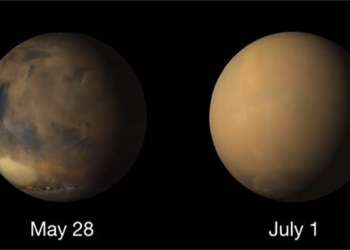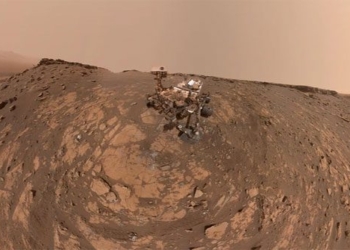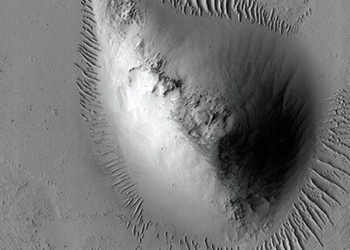The sampling drilling process of the Perseverance robot went smoothly, but the sample tube was found empty, leaving scientists puzzled.
The Perseverance Robot drilled a sample hole for the first time on August 6, marking an important milestone in the $2.7 billion mission. However, the data sent back to Earth by the robot indicated that no Martian soil or rock had entered the sample container, NASA reported.

Drilled hole on the surface of Mars by the Perseverance robot. (Photo: NASA/JPL-Caltech).
“It didn’t succeed on the first attempt as we hoped, but every new job comes with risks. I am confident that we have the right team addressing this issue and will persist in finding solutions to ensure future success,” said Thomas Zurbuchen, a NASA expert.
Perseverance carries 43 sample tubes. It will use the drill on its 2.1-meter-long robotic arm to drill into Martian rock and collect material into at least 20 tubes. Data sent back by Perseverance on August 6 indicated that the drill operated as expected and the process of handling the sample tube also seemed to proceed normally.
“The sampling process is fully automated from start to finish. One of the steps that occurs after placing the sample tube is measuring the amount of material collected. However, the robot did not encounter the resistance that the material inside the tube would cause,” stated Jessica Samuels, the mission lead for Perseverance’s surface operations at NASA’s Jet Propulsion Laboratory (JPL).
The successful drilling but empty sample tube has never occurred during tests on Earth. “Based on initial assessments, it is likely that the target rock did not behave as we predicted, with a lower likelihood that the sampling system experienced a hardware failure,” said Jennifer Trosper, Perseverance project manager at JPL.
“In the coming days, we will spend more time analyzing the data we have, while also gathering additional diagnostic data to help understand the root cause of the empty sample tube,” Trosper added. Additional data will include detailed images of the drilled hole taken by Perseverance’s WATSON camera.
Previously, unexpected characteristics of rocks and soil have posed challenges for Mars robots. For example, the Curiosity robot drilled into rocks that were significantly harder or more brittle than scientists had predicted. The InSight lander also could not dig as deep as planned, potentially due to a mix of loose and sticky soil hindering progress.



















































